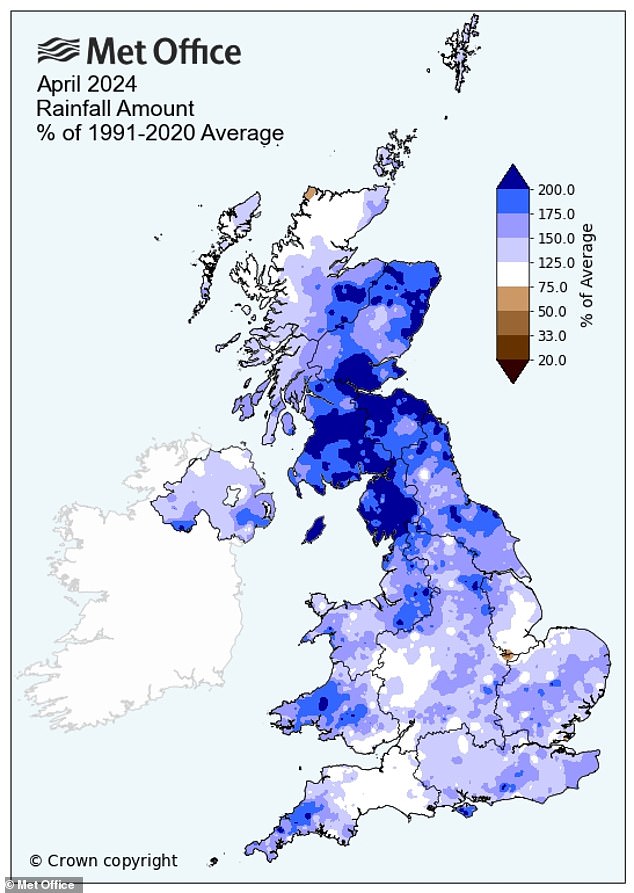April was sixth wettest on RECORD in Britain – with 55% more rainfall than average, Met Office reveals
- Met Office confirms April was sixth wettest on record since 1836
- It is the wettest April since 2012, according to preliminary statistics
In news that will come as no surprise to most Brits, the Met Office has confirmed that April was the sixth wettest month on record since 1836.
In total, precipitation fell 55 percent more than the long-term average, the forecast body said.
It is also the wettest April since 2012, according to preliminary statistics.
Forecasters measure spring from March to May – and so far the Met Office says we’ve seen 96 per cent of the long-term average for the whole season.
The spring has been so wet that both England and Wales have already seen above their long-term average rainfall all season.
In news that will come as no surprise to most Britons, the Met Office has confirmed that April was the sixth wettest since records date back to 1836. Pictured: Pedestrians on Westminster Bridge on April 19
Britain as a whole has seen 96 percent of its average spring rainfall.
At this point we would normally have only had about two-thirds (66 percent) of average precipitation.
The weather was not only wet, but also dull: sunshine was only 79 percent of the long-term average for the month.
Many areas exceeded their long-term average monthly rainfall, with Scotland experiencing its fourth wettest April with 148.9mm of rain – more than 60 percent of average and the wettest April since 1947.
Met Office scientist Emily Carlisle said: ‘April is a continuation of recent months: often wet, windy and unsettled.
‘There were showers in April from the start of the month, with frontal systems bringing persistent rain across the UK.
‘Although a high pressure system passed over Britain on the 20th, bringing some drier weather, low pressure was back in charge towards the end of the month, bringing more rain.’
The month started warm, especially along the south-east coast – with temperatures of 21.8°C in Writtle, Essex.
But temperatures dropped and remained only slightly below average for most of the last two weeks of April.
This offset warmer temperatures at the start of the month and resulted in a provisional average mean temperature of 8.3°C for Britain, just 0.4°C higher than the 1991-2020 long-term average.

In total, precipitation fell 55 percent more than the long-term average, the forecast body said
Cloudy conditions often kept overnight temperatures steady, with the average minimum temperature being above average (+0.8°C).
There were only 122.9 hours of sunshine in April, 79 percent of the long-term average.
There was only one ‘named’ storm: Storm Kathleen, which brought heavy rain and strong winds to Scotland, Wales, parts of Northern Ireland and the west coast of England.
Paddy Graham-Jones of Albert Bartlett, a leading British potato supplier, said potato fields had rotted due to the wet weather.
Speaking about one field, he told Sky News: ‘I was hoping I would find one good potato here, but there isn’t one left. They’re all rotten.’
